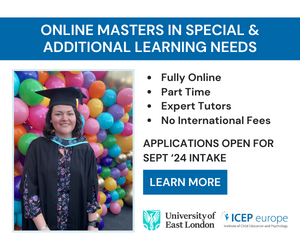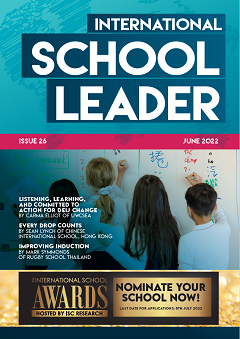By Jenny-Lee Moore and Megan Brazil
Who said “Great leaders are born, not made” anyway? Did anyone ever say this? Actually, yes! It’s called the Great Man Theory of Leadership and fortunately, Science Direct tells us that it “is not an empirically validated theory” so we can move right along.
We at UNIS Hanoi believe strongly that great leaders are made, and not born. In education, almost all school leaders rise through the ranks having begun their careers in the classroom. Being a highly effective second-grade teacher, physics teacher or counsellor, does not, however, provide one with a set of skills for effective leadership to be able to deftly lead teams, programmes and schools.
If most school leaders start out as teachers, what is the leadership pathway? In many cases, it is forged by individuals with a desire to lead, to serve, to have an impact beyond the classroom. They take on postgraduate study, engage in professional courses, and in many cases, simply learn on the job when handed a title that expects and assumes leadership capability.
What if there was a clearer path? What if schools were able to identify educators with a desire to lead, and provide them with clear leadership development opportunities to build their capacity as leaders?
Being clear about who we want our middle leaders to be, determines what they will do. But how do schools define this vision? Is it worth seeking a definition of something between leadership and management and then to consider on which side of the divide the middle level leader role and its expectations fit?
This is harder than it seems. Traditionally speaking, managers oversee the functioning of structures and systems and maintain the status quo within an organisation. Their focus is on control and task completion. Leaders, on the other hand, are concerned with new directions and change, which includes making sure that people on teams feel safe, supported and empowered.
Despite this apparent distinction, the relationship between management and leadership is a muddy one. While leadership can be understood as a process of influence, based on a set of values or vision, research in the field of educational leadership also suggests that denoted management activities inevitably influence others, and in influencing others, leadership occurs. Is it possible to have one without the other?
But what if our educational systems allowed us to consider our middle level leaders from a different perspective? What if middle level leaders were afforded the freedom to move away from management responsibilities and to develop their capacity as influencers and innovators?
This is a vision at the heart of UNIS Hanoi’s professional development structures.
It requires trust, relinquishing traditional hierarchies of control, and above all, a shared commitment to educational pedagogies that align with the mission, vision and values of the school. The conditions for success must be assessed and curated for highly skilled middle level leaders to emerge. This is what we have been working to achieve at UNIS Hanoi.
Empowering our middle level leaders has been built upon three pillars:
- An explicit vision for leadership.
- A recognition of the skills required to lead effectively.
- A commitment to supporting the growth and wellbeing of leaders.
As one of two UN schools in the world, the UNIS vision is inherently aligned with the values of the United Nations and the principles of the 17 Sustainable Development Goals. This connection is critical in attracting educators with shared ideological goals and aspirations to be part of a school that creates and inspires changemakers for a better world. The mission is strong. So what next?
Bravery.
What do you want your middle level leaders to do? What are you brave enough to encourage your leaders to do? This pillar requires honesty – and the ability of a senior leadership team to lighten the grip. Let go. Good people have been hired. Trust them. Give them the parameters they need for success by identifying your expectations of them, and where the boundaries lie.
And the second pillar? Skills development. The provision of intentional professional development in leadership skills, people management, empathy and hard conversations are all critical components of your third pillar. A trifecta of experience, training and mentorship from members of the senior leadership team is essential in raising your middle level leaders to become skillful influencers and leaders.
Given that most classroom teachers do not come equipped with leadership training, schools must invest wisely in developing their leaders, intentionally, not accidentally. Key ingredients of the leadership pathway at UNIS Hanoi include:
- Clarity of expectations through a job description that identifies two major responsibilities for team leaders: fostering a collaborative culture, and facilitating improvements in instruction and assessment.
- Team leader meeting agendas that have a balance of management responsibilities and opportunities for leadership development. Agendas are carefully planned and use a range of protocols that middle leaders can try out with their own teams. Our intention is that every leadership team meeting is an opportunity for growing leadership capacity.
- Annual leadership retreat. This gift of time and day of renewal and training allows our leaders to feel connected to our mission, vision and values and to feel supported in our leadership work.
- Investment in a leadership library. Team leaders are provided with a stack of key leadership books for the full school year – a compendium of leadership wisdom, and another layer of support for the complexities of leading adult teams.
- An annual book study provides us with a shared experience and adds to our collective wisdom and expands our leadership toolbox throughout the year.
- A timeline of leadership priorities. From onboarding new faculty in August, to facilitating data conversations, to conducting mid-year team health checks, this calendar keeps leaders on track and allows us to build in professional learning at just the right times so that leaders feel well equipped with the skills to carry out these important responsibilities.
- Year-round mentorship with senior leaders for reflective conversations and wellbeing check-ins. This provides a safe, supportive structure for leaders to seek coaching, counsel and confidentiality.
Finally, none of this would be possible without the essential third pillar, which is that schools must take care of their leaders so that they can take care of others. The affective burden of leadership is real – it’s intense – and requires what Heffernan & Mills (2021) describe as “emotional and affective labour” which can take a toll on the wellbeing of leaders if not acknowledged and proactively planned for. Building an environment where vulnerability, bravery, mistake-making and risk-taking are celebrated leadership qualities, again, takes time and intention, and results in high organisational trust. Schools who make the time to make this happen find themselves with empowered leaders, who empower teachers, who empower their learners. We believe that this is what our students deserve.
 Jenny-Lee is the Grade 4 Team Leader at the United Nations International School, Hanoi. You can connect with Jenny-Lee on LinkedIn and X.
Jenny-Lee is the Grade 4 Team Leader at the United Nations International School, Hanoi. You can connect with Jenny-Lee on LinkedIn and X.
 Megan is the Elementary Principal at United Nations International School, Hanoi. You can connect with Megan on LinkedIn and X
Megan is the Elementary Principal at United Nations International School, Hanoi. You can connect with Megan on LinkedIn and X







